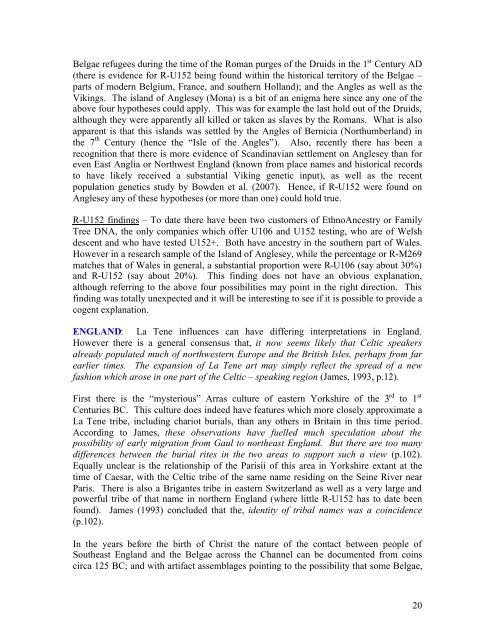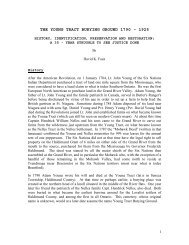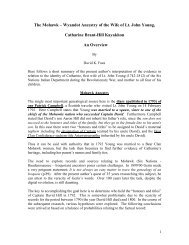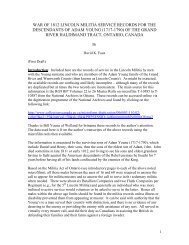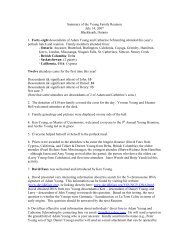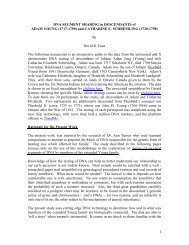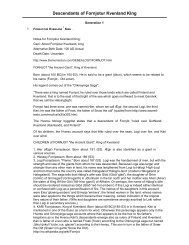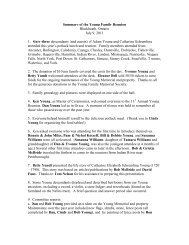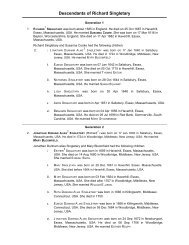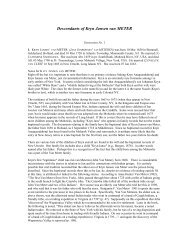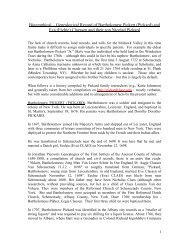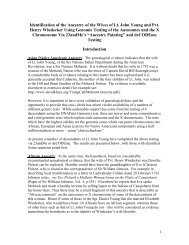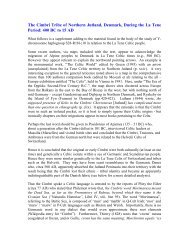Part 2 - Davidkfaux.org
Part 2 - Davidkfaux.org
Part 2 - Davidkfaux.org
Create successful ePaper yourself
Turn your PDF publications into a flip-book with our unique Google optimized e-Paper software.
Belgae refugees during the time of the Roman purges of the Druids in the 1 st Century AD(there is evidence for R-U152 being found within the historical territory of the Belgae –parts of modern Belgium, France, and southern Holland); and the Angles as well as theVikings. The island of Anglesey (Mona) is a bit of an enigma here since any one of theabove four hypotheses could apply. This was for example the last hold out of the Druids,although they were apparently all killed or taken as slaves by the Romans. What is alsoapparent is that this islands was settled by the Angles of Bernicia (Northumberland) inthe 7 th Century (hence the “Isle of the Angles”). Also, recently there has been arecognition that there is more evidence of Scandinavian settlement on Anglesey than foreven East Anglia or Northwest England (known from place names and historical recordsto have likely received a substantial Viking genetic input), as well as the recentpopulation genetics study by Bowden et al. (2007). Hence, if R-U152 were found onAnglesey any of these hypotheses (or more than one) could hold true.R-U152 findings – To date there have been two customers of EthnoAncestry or FamilyTree DNA, the only companies which offer U106 and U152 testing, who are of Welshdescent and who have tested U152+. Both have ancestry in the southern part of Wales.However in a research sample of the Island of Anglesey, while the percentage or R-M269matches that of Wales in general, a substantial proportion were R-U106 (say about 30%)and R-U152 (say about 20%). This finding does not have an obvious explanation,although referring to the above four possibilities may point in the right direction. Thisfinding was totally unexpected and it will be interesting to see if it is possible to provide acogent explanation.ENGLAND: La Tene influences can have differing interpretations in England.However there is a general consensus that, it now seems likely that Celtic speakersalready populated much of northwestern Europe and the British Isles, perhaps from farearlier times. The expansion of La Tene art may simply reflect the spread of a newfashion which arose in one part of the Celtic – speaking region (James, 1993, p.12).First there is the “mysterious” Arras culture of eastern Yorkshire of the 3 rd to 1 stCenturies BC. This culture does indeed have features which more closely approximate aLa Tene tribe, including chariot burials, than any others in Britain in this time period.According to James, these observations have fuelled much speculation about thepossibility of early migration from Gaul to northeast England. But there are too manydifferences between the burial rites in the two areas to support such a view (p.102).Equally unclear is the relationship of the Parisii of this area in Yorkshire extant at thetime of Caesar, with the Celtic tribe of the same name residing on the Seine River nearParis. There is also a Brigantes tribe in eastern Switzerland as well as a very large andpowerful tribe of that name in northern England (where little R-U152 has to date beenfound). James (1993) concluded that the, identity of tribal names was a coincidence(p.102).In the years before the birth of Christ the nature of the contact between people ofSoutheast England and the Belgae across the Channel can be documented from coinscirca 125 BC; and with artifact assemblages pointing to the possibility that some Belgae,20


